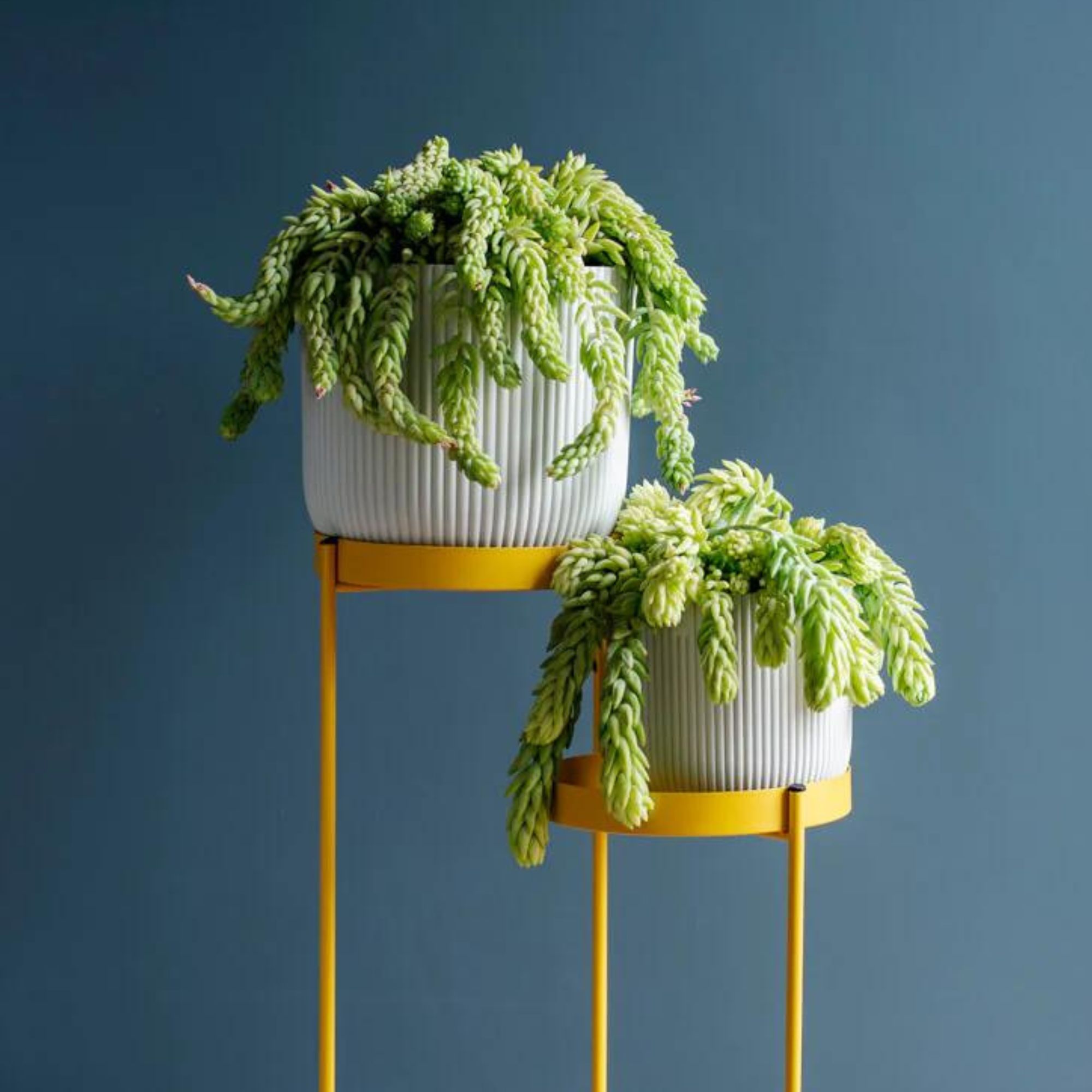Learn how to care for Burro’s Tail and you'll be richly rewarded
This quirky hanging succulent strikes a stunning silhouette and is undoubtedly worth the effort
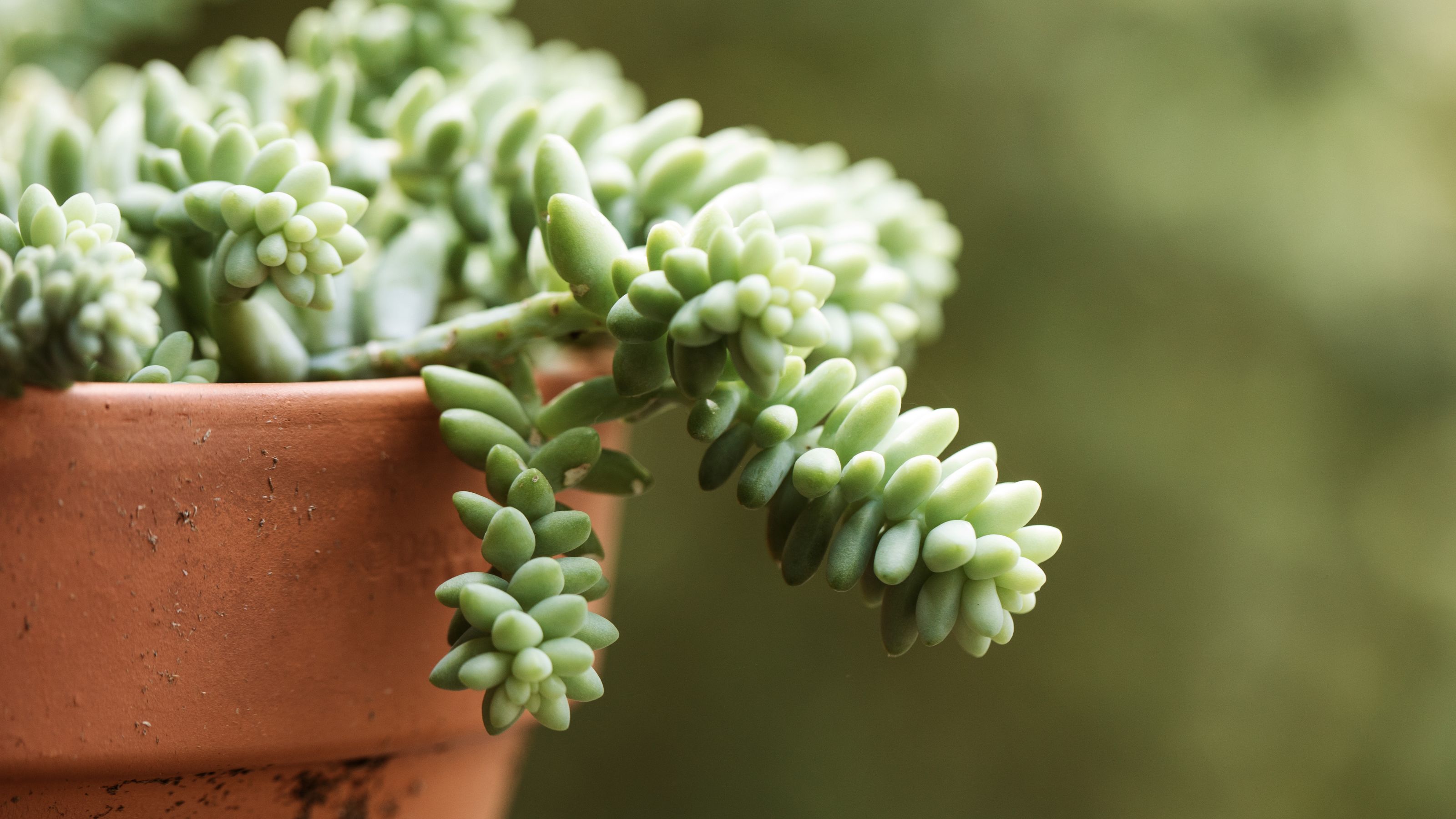

Demanding houseplants need to give a good return on investment – and Burro’s Tail definitely delivers. It is also known as Sedum morganianum or donkey tail plant and often sold as a hanging houseplant.
One of the most eye-catching houseplant ideas, its trailing rope-like stems, adorned with small, plump leaves, bring a burst of texture and character to a bookshelf or corner of the room and produce dainty pink or red flower clusters at the end of the vines throughout summer.
How to care for Burro’s Tail
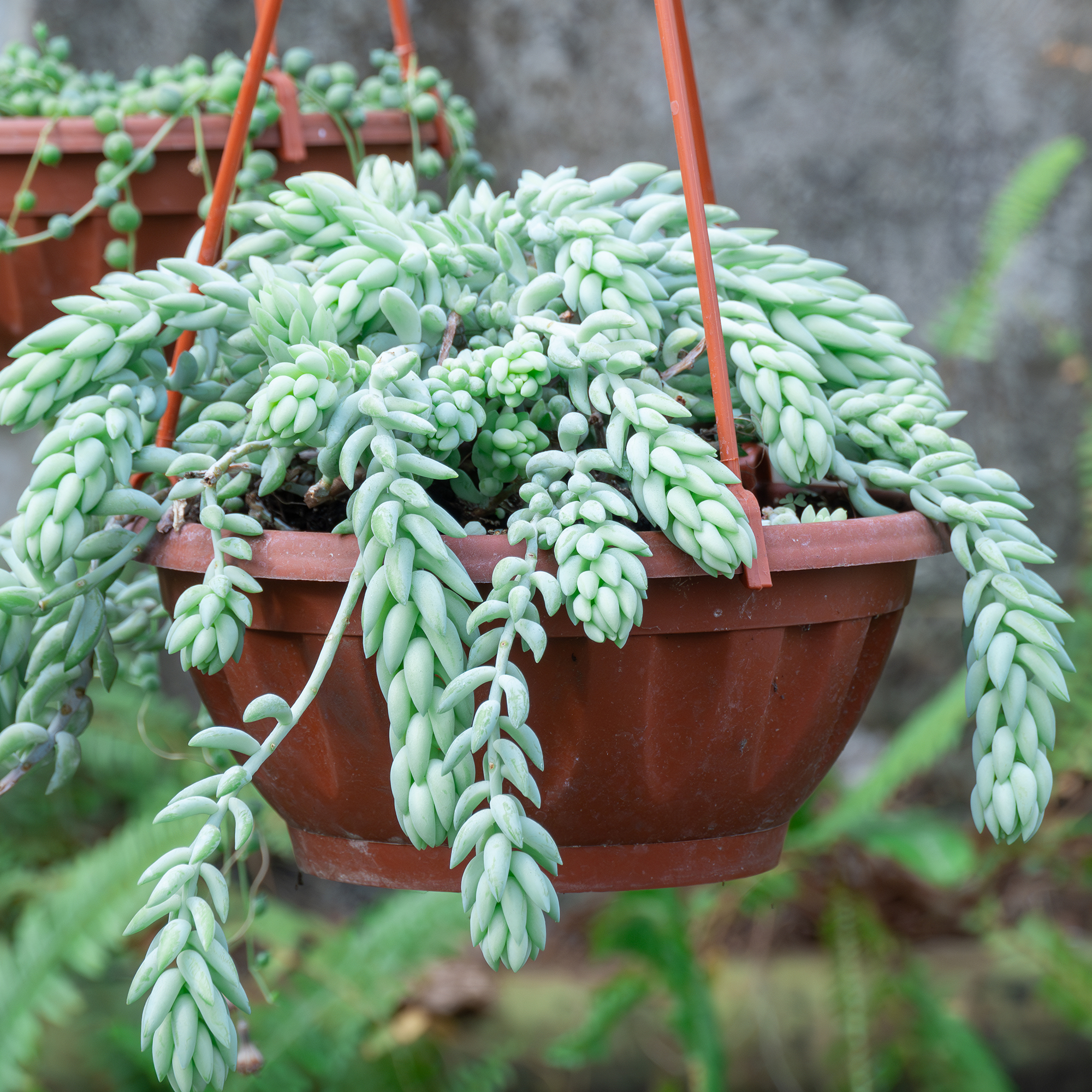
When caring for this beauty, lightness of touch is vital. ‘One of the challenges of Burro's Tail is that it is very fragile. Be very careful when moving it and choose a spot where it is unlikely that children and pets are going to brush past it,’ advises Lindsay Skene, owner of Linden Plants.
‘However, if you do end up with a stem becoming disconnected it’s not all bad news as this can lead to a great opportunity to propagate.’
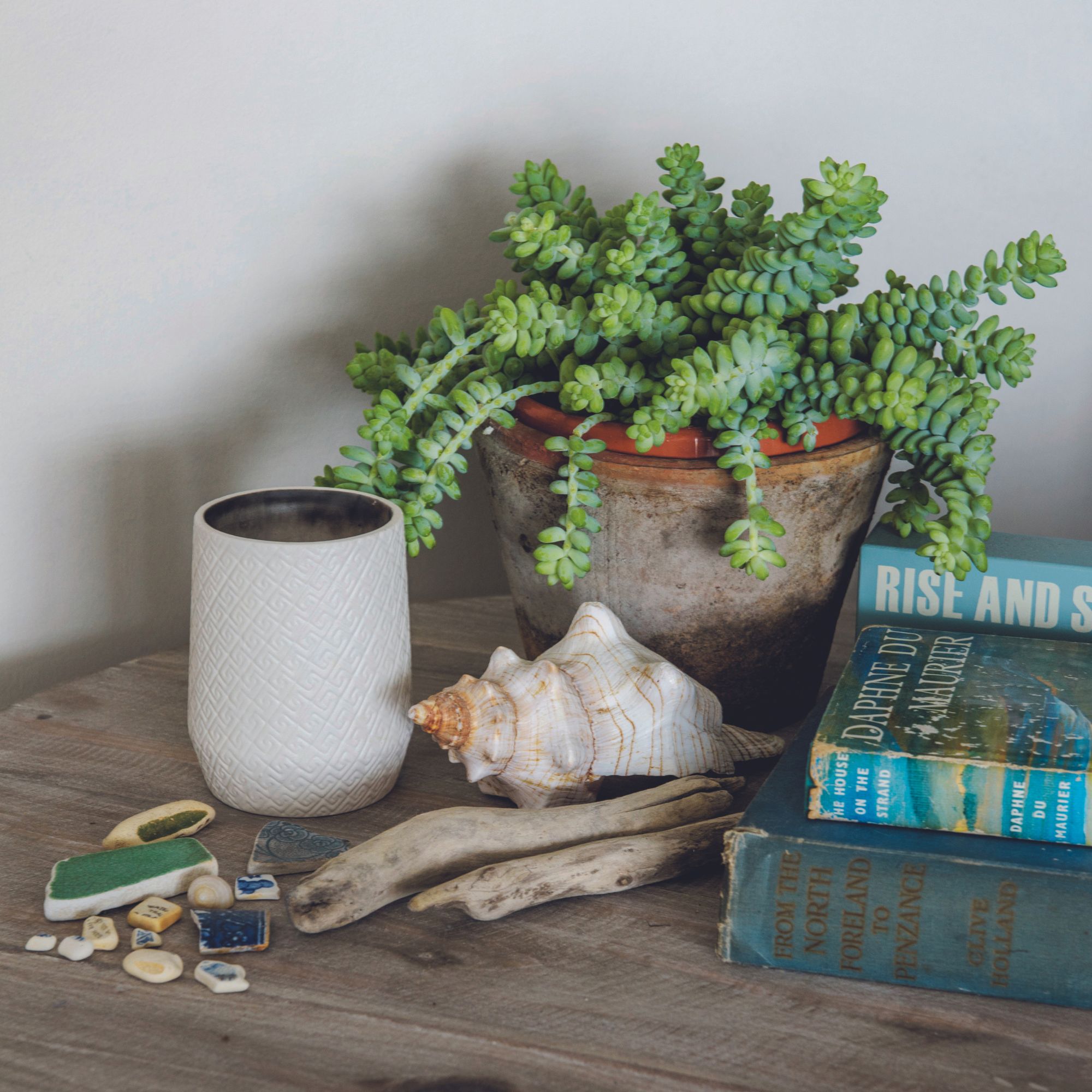
What you'll need
- Burro’s Tail
- Plastic pot with drainage holes – one size larger than the size of the plant bought
- Decorative pot without holes or draining tray
- A trowel
- Succulent compost, such as succulent or cactus potting compost – like this from Amazon
- Succulent houseplant food, such as BioFood Cactus food from Amazon
Where to buy a Burro's Tail
Due to its fragility, packaging is vital if buying Burro's Tail online – opt for a reputable supplier, such as a garden centre or one of the best online shops for buying houseplants.
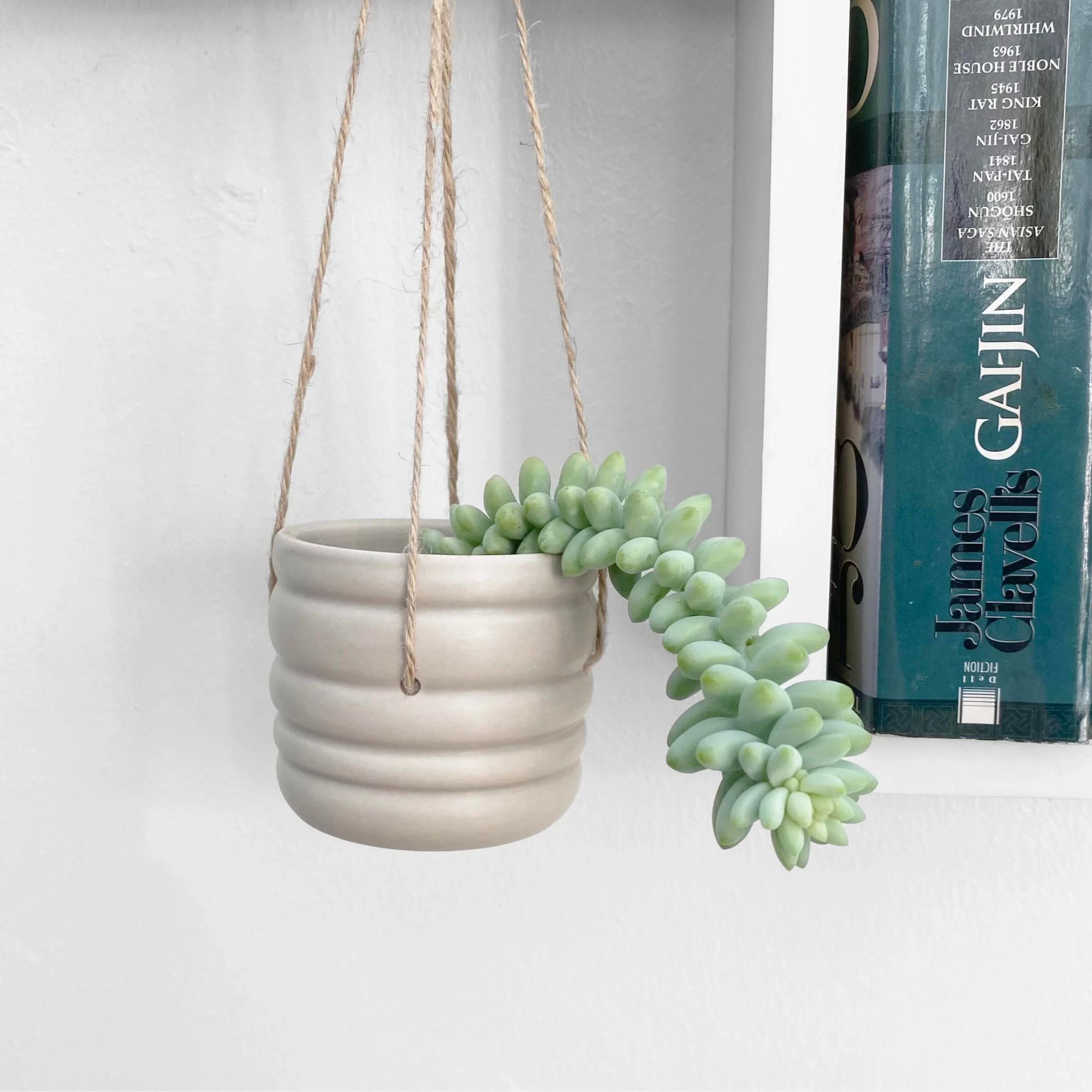
Perfect for those who like to 'grow-your-own', Cloud Succulents sell cuttings for propagation and bare root young plants for the fraction of the cost of established plants. All you need is a little patience.
Where to position a Burro's Tail
Native to South Mexico, Burro’s Tail thrive in warm temperatures – ideally between 15°C and 27°C – and in a spot that receives bright, indirect light. Despite its love of warmth, ensure the plant is not placed above a radiator or in the path of any draughts.
‘Place Burro's Tail in a southwest-facing living room, bedroom or study window. Even a conservatory can be a good place if it has some sun protection,’ advises Ralph Behrmann from Cloud Hill Succulents.
Get the Ideal Home Newsletter
Sign up to our newsletter for style and decor inspiration, house makeovers, project advice and more.
‘Avoid rooms like bathrooms or kitchens as the air there tends to be too moist for the plant.’ For these rooms, look for plants that thrive in high humidity such as these bathroom plant ideas.
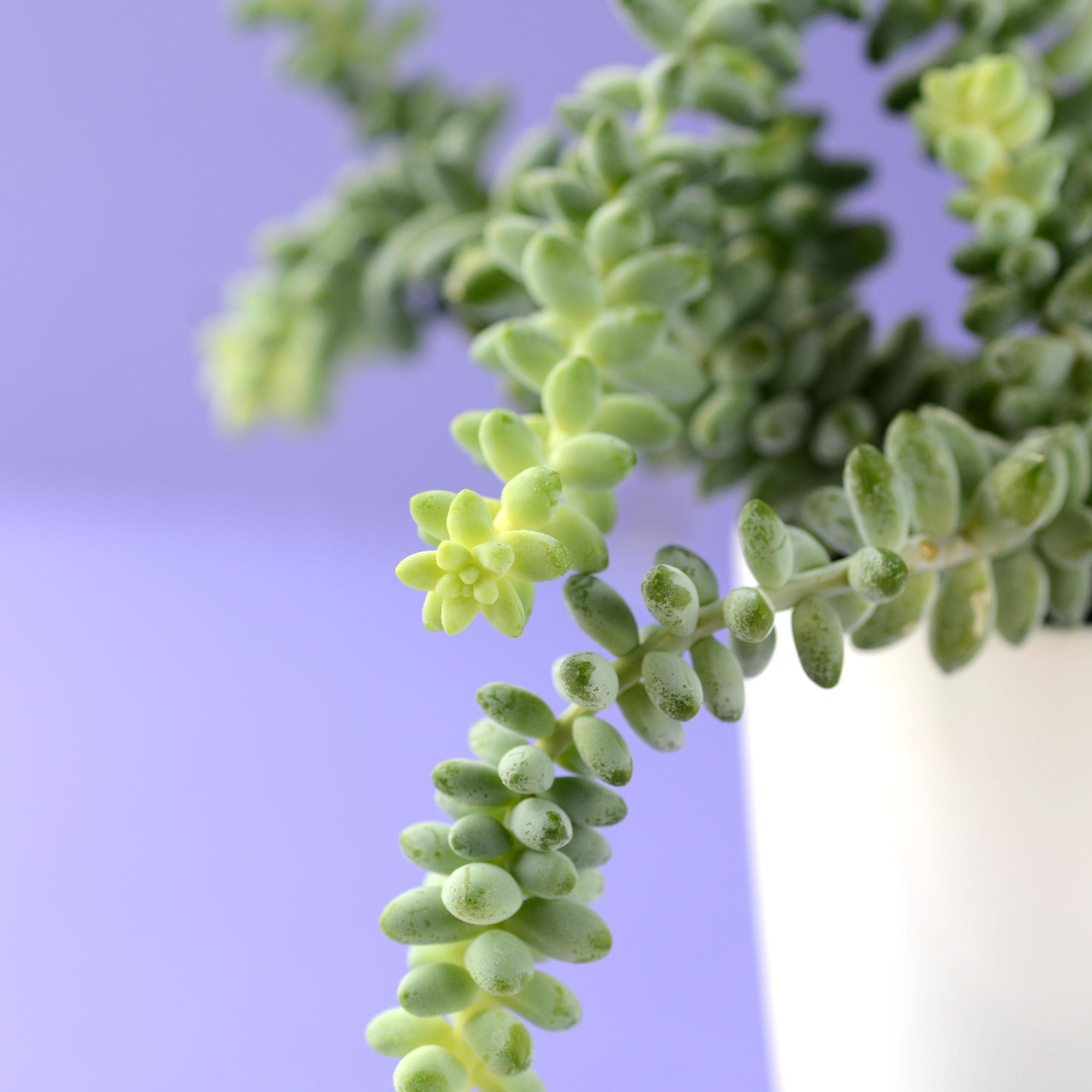
How to water your Burro's Tail
As a succulent, Burro’s Tail stores water in its leaves. This means it doesn’t need watering very often – once every two to three weeks is ideal. Knowing how often you should water succulents is very important.
‘Too much water will cause the leaves to become mushy, too little will make them shrivel,’ says Lindsay Skene. This also makes the leaves an ideal indicator as to whether the plant needs watering. If the usually plump leaves have shrivelled slightly, or the top few centimetres of soil is dry to the touch, then it’s time to water. Alternatively, consider investing in a moisture probe, available on Amazon, to reduce the risk of overwatering.
‘Bottom watering is best for Sedum morganianum to prevent the foliage from rotting but if your plant is growing in bright light, in the super fast draining ideal substrate, and you have excellent air circulation, a top watering every now and again should be okay,’ explains Lisa Price, founder of Root Houseplants.
It is also vital that the plant is not left standing in water for too long as this can lead to root rot – so ensure that the plant is only put back in its decorative pot or saucer once it has fully drained out. ‘Check the saucer or the base of the pot cover half an hour after watering and empty away any water that has gathered,’ adds Lindsay Skene.
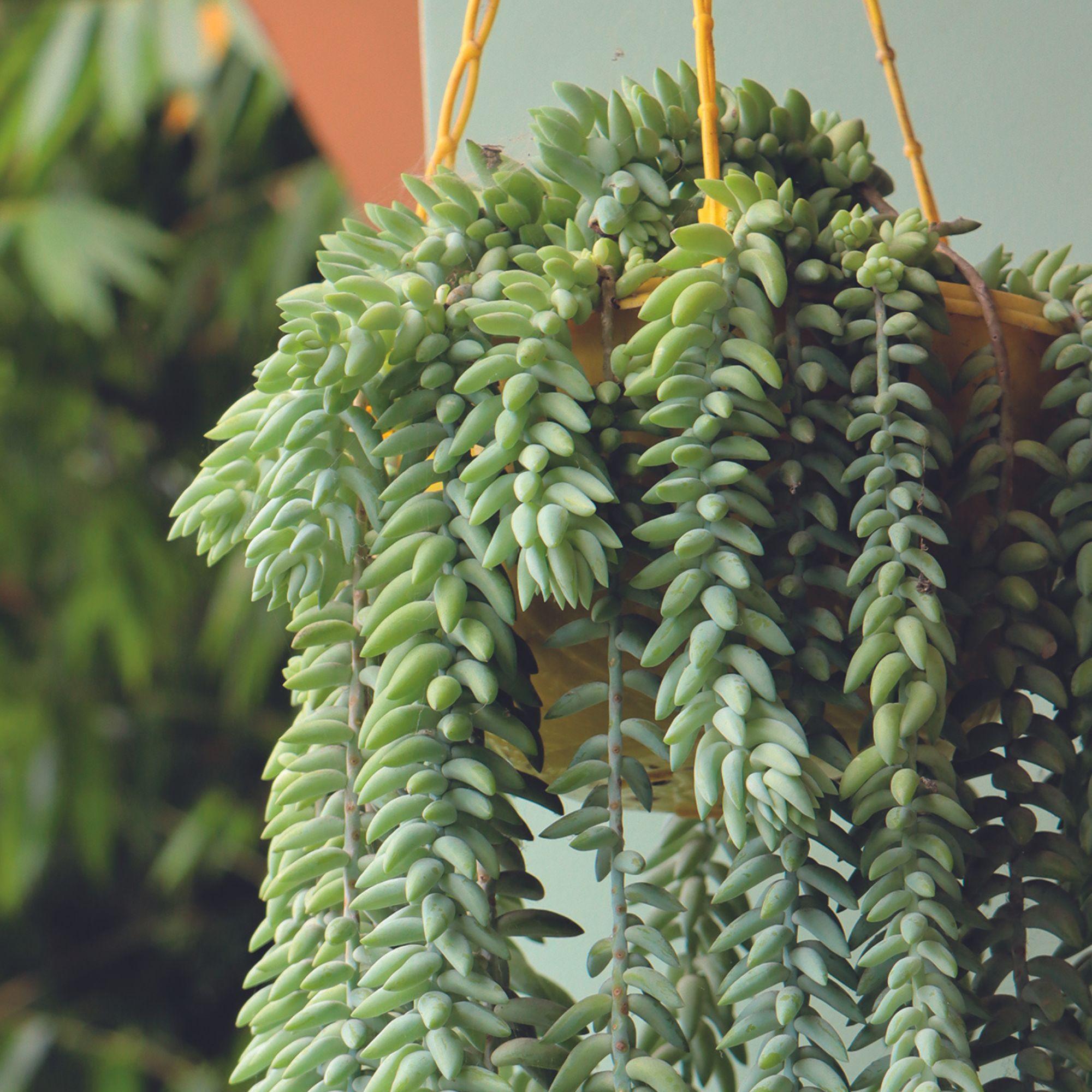
When to feed a Burro's Tail
Feeding with standard succulent plant food, like this succulent and cactus houseplant feed available on Amazon, will help support strong growth in your Burro's Tail. Individual brands will have specific instructions, but as a general rule, ‘feed once or twice a month in spring and summer,’ advises Emily Lawlor, owner of Happy Houseplants.
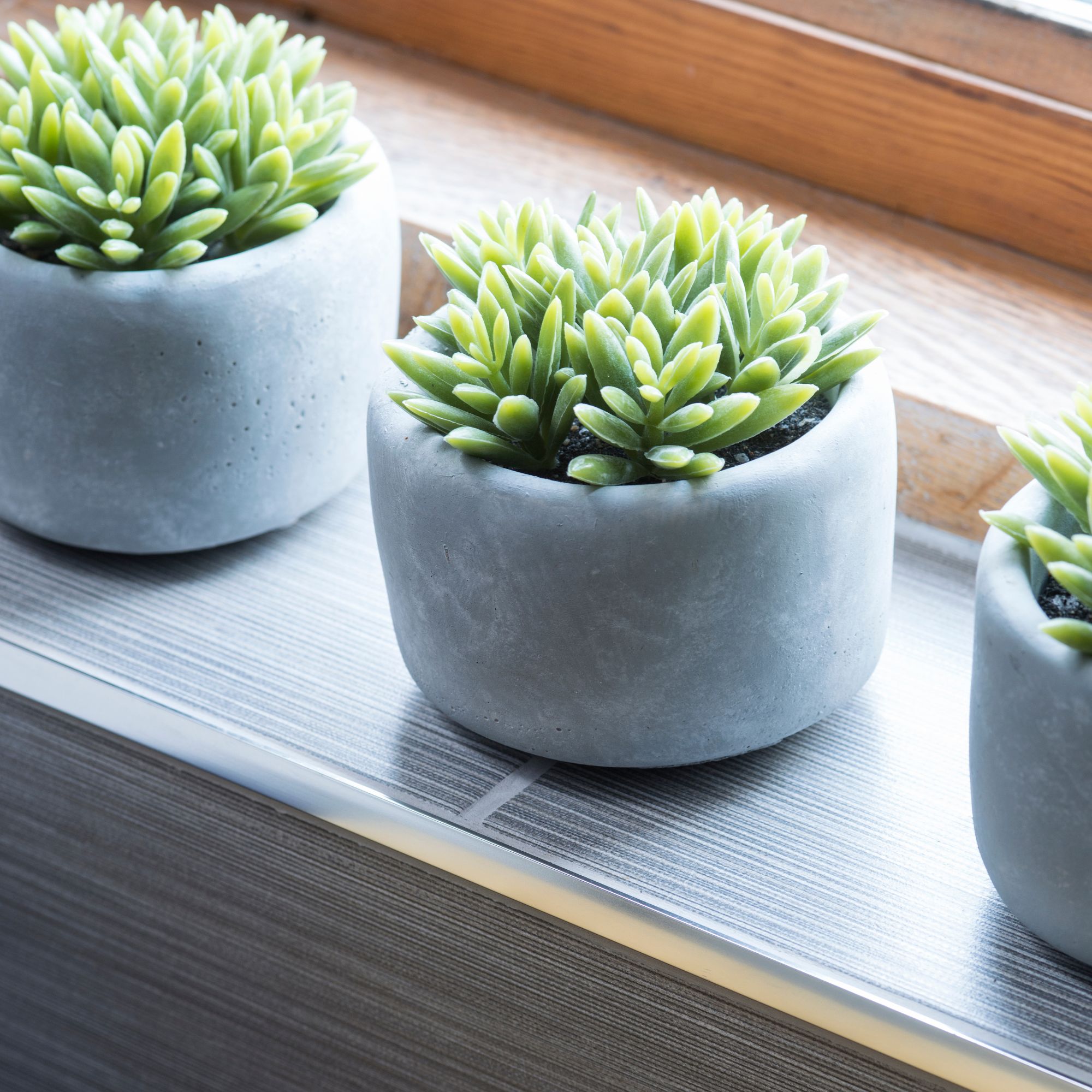
How often should you repot a Burro's Tail?
Burro’s Tail grows slowly but steadily – with vines eventually reaching four inches in length. However, it will still benefit from potting up every two to three years. To identify whether your plant needs repotting, check to see if the roots are visible through the drainage holes at the pot’s base, if they are, then it is time for a bigger pot.
To prevent root rot, ensure that your Burro’s Tail is in a fast-draining compost mix. ‘Opt for a succulent or cactus potting compost – like this from Amazon – or mix regular potting soil with sand or perlite to improve drainage,’ advises Ralph Behrmann.
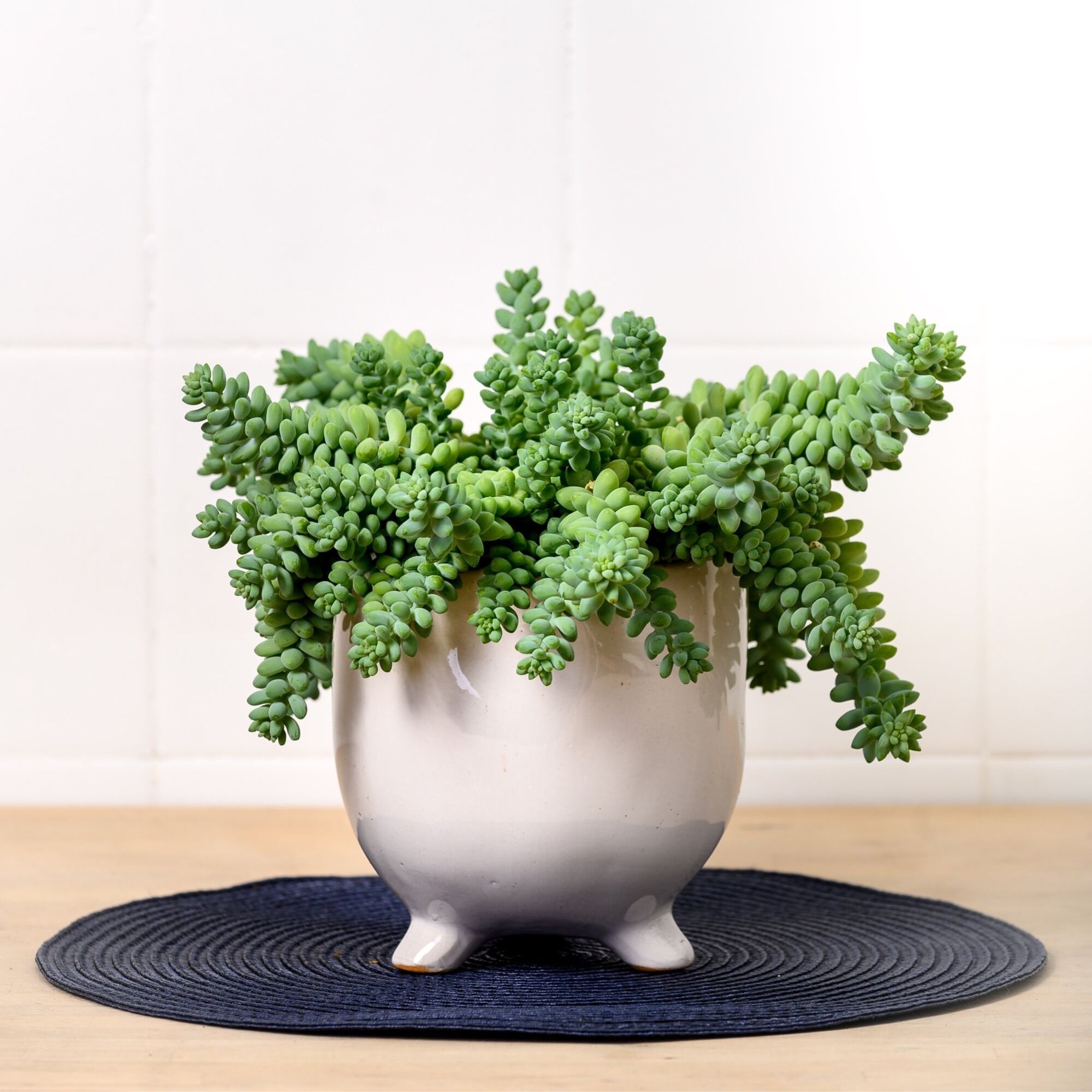
Do you need to prune Burro's Tail?
Burro’s Tail benefits from occasional pruning – especially if the vines get too long. Pruning can also help to stimulate new growth, resulting in a bushier plant. Simply use clean, sharp scissors or gardening snips to cut the stems to the desired length. Allow the cut to callous over – you can then use this cutting to propagate your Burro’s Tail.
FAQs
How do you make a Burro's Tail fuller?
The best way to make a Burro's Tail look fuller is to propagate a cutting and plant the new stems in the same pot as the original plant. Pruning your Burro's Tail can also help to stimulate new growth which will, with time, result in a bushier plant.
If your plant looks leggy, this is likely due to a lack of light, explains succulent expert Ralph Behrmann. Move to a brighter spot, but ensure that the light is indirect.
Why are my Burro's Tail leaves falling off?
Burro's Tail plants are very delicate so will drop some leaves if they are brushed past or moved. However, if a lot of leaves are falling off, then check the soil.
Dropping leaves is typically caused by over or underwatering. One way to avoid this is to always check the soil before watering. If the soil is wet to the touch, reduce the watering frequency and let it dry out before resuming. If the soil is too dry, water thoroughly and check the soil frequently to see when the plant needs rewatering.
Why are my Burro's Tail turning brown?
Brown or bleached leaves indicate scorching, caused by too much sunlight. It isn’t reversible but you can remove damaged leaves and place the Burro's Tail in a spot with more indirect light.

Holly is one of Ideal Home’s content editors. Starting her career in 2018 as a feature writer and sub-editor for Period Living magazine, she has continued this role also adding regular features for Country Homes & Interiors and the Ideal Home website to her roster. Holly has a passion for traditional and country-inspired interiors – especially kitchen design – and is happiest when exploring the countryside and hills of the Lake District. A keen gardener, she is a strong believer that you can never have too many houseplants.
-
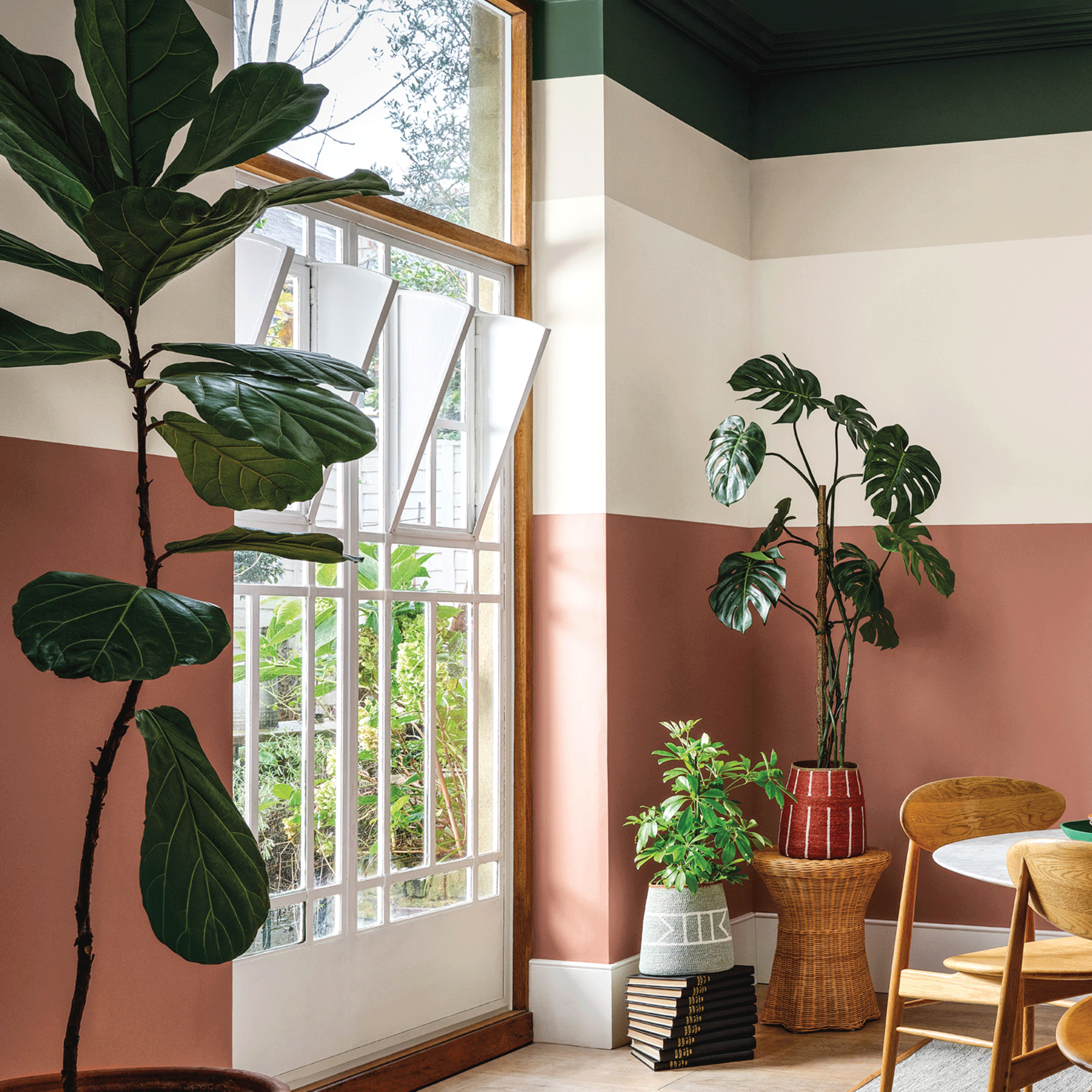 Crown Paint has launched new wall colours for the first time in three years, and changed how I think about neutral shades
Crown Paint has launched new wall colours for the first time in three years, and changed how I think about neutral shadesIs terracotta the ultimate neutral?
By Rebecca Knight
-
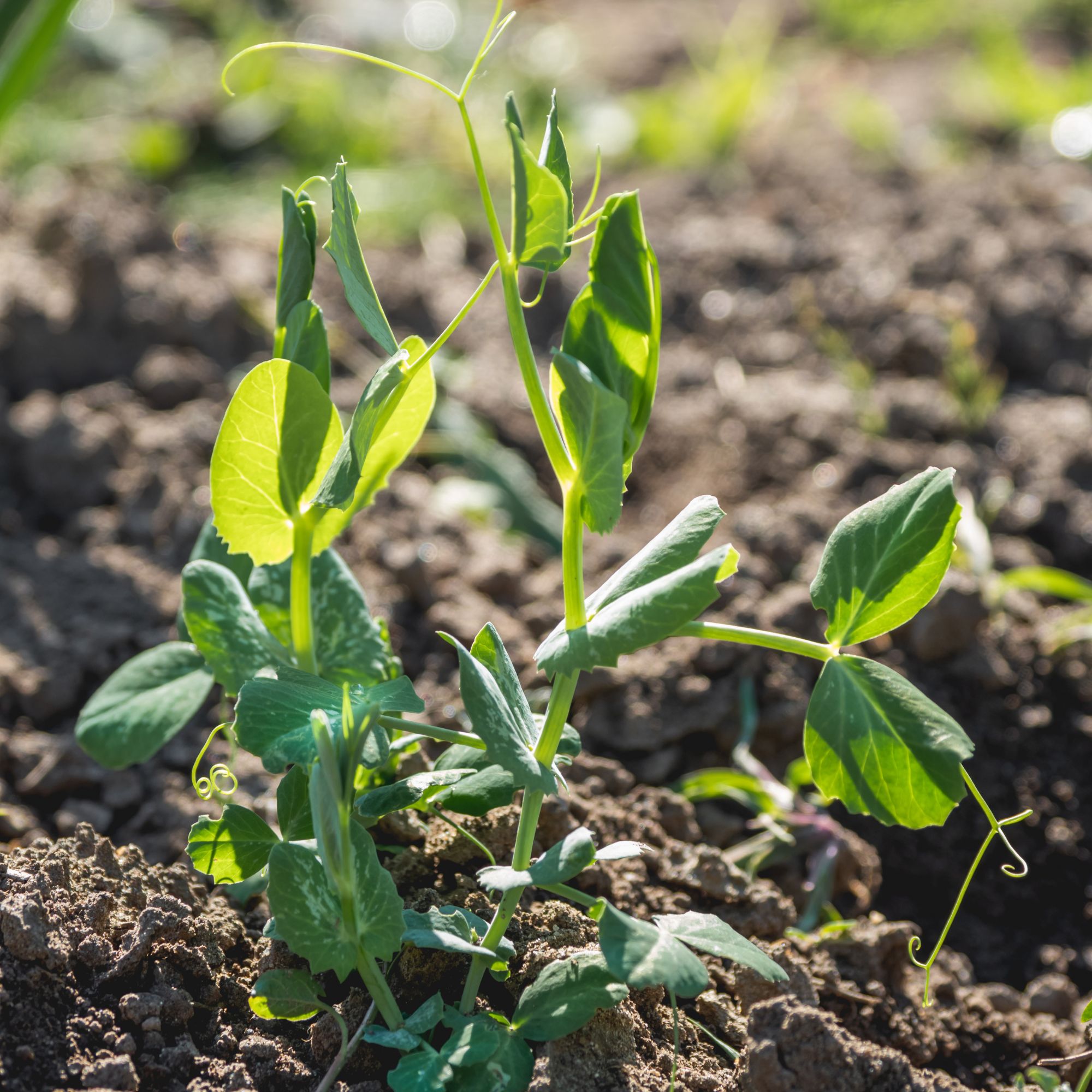 How to protect seedlings from birds – experts say there's a kind and clever way to stop them pecking
How to protect seedlings from birds – experts say there's a kind and clever way to stop them peckingYes, you can protect seedlings from birds without harming your feathered friends...
By Kayleigh Dray
-
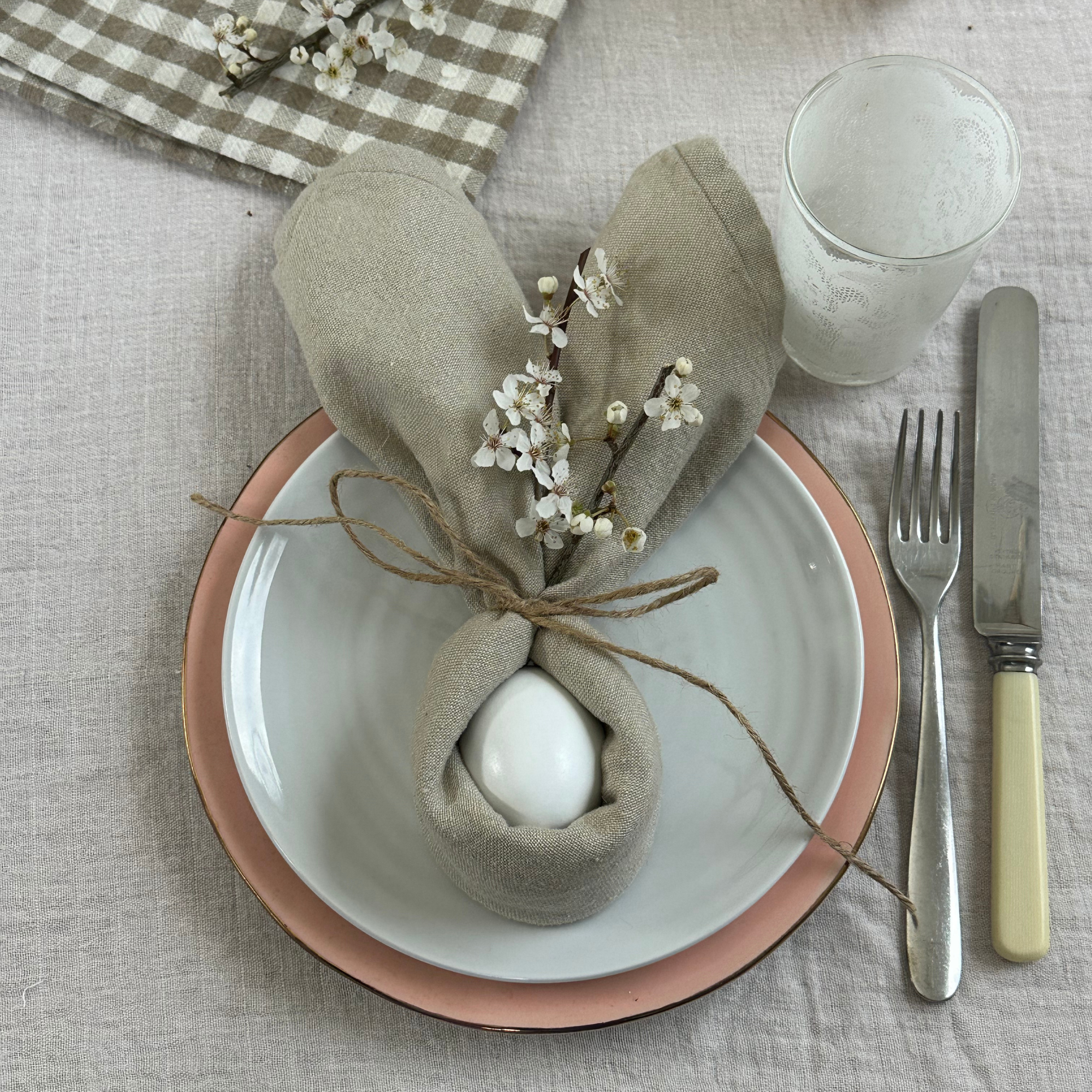 We tried the viral napkin bunny ears hack – it only takes five minutes and will take your Easter table to the next level
We tried the viral napkin bunny ears hack – it only takes five minutes and will take your Easter table to the next levelThis Easter craft is not only beautiful, but really easy to do
By Kezia Reynolds
